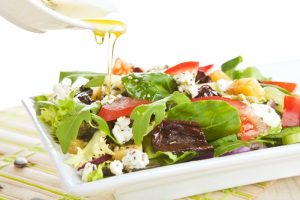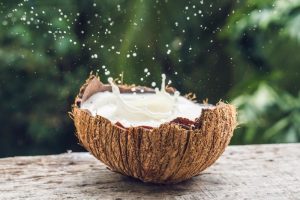By Editorial Staff | sponsored links disclosure
Burn Fat Faster on The Paleo Diet For a Lean Physique and Maximum Fitness

With so many different diets to pick and choose from what exactly makes the ‘Paleo Diet’ so special?
And why are so many people dumping their fashionable fad diets and beginning to take notice of what doctors, top sports coaches, athletes and scientific researchers are saying, and what the converted have been saying all along!
This is NOT a diet program that limits you to “x” number of calories per day… this is a lifestyle diet that lets you eat without calorie counting.
Doctors with previously mixed opinions on nutrition and balanced diets are beginning to see the immense benefits in following the paleolithic diet, and many are now recommending Paleo to their patients.
Many top trainers and top sports coaches only recommend a paleo friendly diet to athletes. Infact it has rapidly become one of the most popular fitness and weight loss regimens worldwide.
If the caveman didn’t eat it then you shouldn’t be eating it
The basic premise of the diet is – “If the caveman didn’t eat it, then you shouldn’t be eating it either”.
But it’s impossible for us living in the modern world to exactly replicate the foods that were eaten during the Paleolithic period. This accounts for why there are so many different variations of the diet, but they do agree on a few key principles.
Generally the paleo diet is higher in fats and protein, and is centered on recipes mainly consisting of fish, grass-fed pasture raised meats, free-range poultry, eggs, vegetables, fruits, roots, and nuts.
According to Dr. Loren Cordain a research scientist who has spent his career studying the paleolithic diet, the average meat intake of hunter gatherers was 55% of all calories consumed, and the balance came from plant foods.
Foods to eliminate
Foods cultivated through extensive agriculture practices such as cereal grains and legumes (especially soy) are to be avoided. Dairy products, salt, refined sugar, processed fats/oils and processed foods (the largest source of toxicity and malnutrition) are also eliminated.
Some variations of the original diet are more flexible and do allow small amounts of grains, legumes and dairy products, but they all forbid processed food and sugars.
What to eat
It’s quite simple to follow. ‘Eat Real Foods’. Ideally you want to be eating poultry and meat from animals that have been raised organically, and eating organically grown vegetables and some fruit. (Fruits contain lots of sugars and for those trying to lose weight they should limit their fruit consumption, and completely avoid high sugar fruits).
Here’s a small list of the many foods to incorporate into your diet.



And What About Sweet Things..?
One of the biggest stumbling blocks with the paleo food plan is desserts. Most desserts have unnatural sweeteners and starchy carbs that spike insulin levels, and are a recipe for disaster.
However, with children, special celebrations and birthdays, sometimes a sweet treat is expected and there are some very tasty paleo desserts that can help you transition into the paleo lifestyle without indulging in bad choices.
While it is not a good idea to eat desserts after every meal, paleo friendly desserts can stop hardcore cravings from your pre-paleo days. Here is a list of whole food substitutions you can use to whip delicious desserts.
Almond flour – Grinding almonds to create a nutritious and high protein flour, perfect for making muffins, breads and of course, traditional macaroons.
Raw Honey – Because honey can be eaten straight from the tree, it is considered a true Paleo sweetener and the perfect sugar substitute. Although it is a whole food, honey is relatively high in calories and does spike the insulin level, so use it sparingly.
Cocoa – Unsweetened dark chocolate has nutritious antioxidants and is consistent with the limited dairy rules. Opt for the natural cocoa over the Dutch processed version that loses more than half of its natural antioxidants during processing.
Pure Vanilla Extract – Pure vanilla extract is a common ingredient found in most bakers cupboards. Just be sure to buy the ‘pure’ extract and not the cheap flavoring.
Coconut Oil – Coconut oil is a medium chain fatty acid, which means it transfers directly to the liver where it’s used for energy instead of being stored as fat. It also stimulates the thyroid gland helping to speed up the metabolism. Coconut oil adds a subtle sweetness to cobblers pancakes and other baked recipes.
Coconut Milk – An excellent ‘non-dairy’ milk substitute. Coconut milk contains lauric acid which is proven to fight influenza, herpes, HIV as well as improve the immune system. Use coconut oil to make ice cream, hot cocoa, puddings, and even egg nog.
Nuts – Nuts are loaded with the good fats that our bodies need. Hazelnuts, pecans, macademians and almonds are lifesavers in the kitchen. Use nuts for pie crusts, candies or even as simple spiced nut blend.
Frozen Fruit – Freeze berries to make easy desserts. Use them to make rich frothy smoothies or sorbets. Frozen grapes and cherries taste delicious straight from the freezer. Try frozen bananas on a stick or blended down for a creamy ice cream experience.
Dates – Dates are natural sweeteners, they contain simple sugars like dextrose and fructose that are easy to digest and help to replenish your energy. Blend dates in the food processor with wet ingredients when baking. They also work well for binding snack bars.
Following a paleo style diet is more about experimenting with food than about limitations, and mother nature provides a large variety of delicious foods to explore. So instead of settling for processed fast foods that will pile on pounds of fat, start feasting on healthy REAL foods and weight loss will come naturally.





